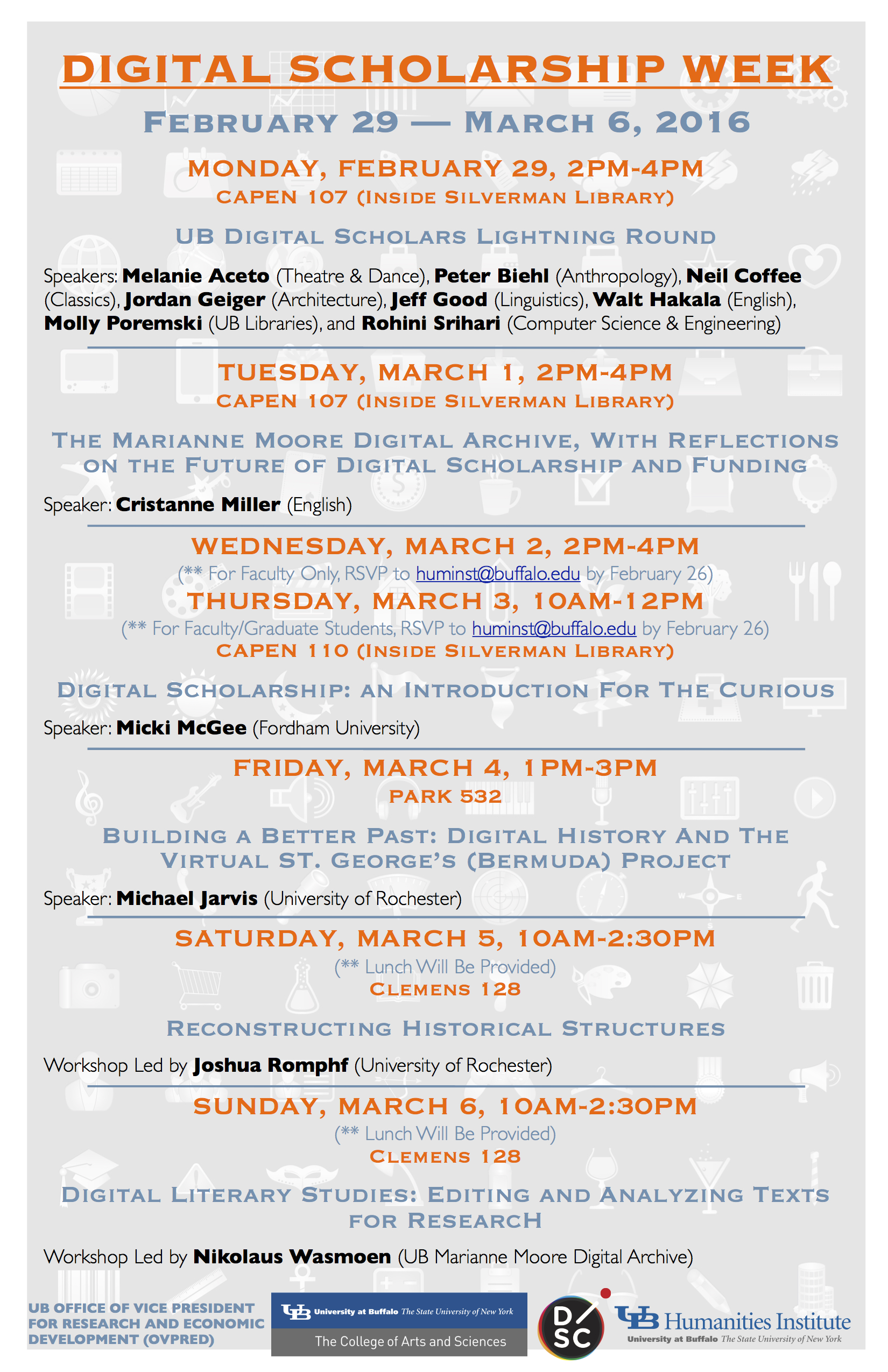Graduate Project Assistant (multiple available for Spring semester 2017)
Summary:
Work as part of a small team to provide research and database support for the Digital Scholarship Pathways Project.
Graduate Student Assistants will be responsible for directed web research, data collection, and record keeping related to the Digital Scholarship Pathways Project, an effort to create new digital scholarship curriculum in the humanities, arts, education, and social sciences. Assistants will be expected to meet regularly with project directors and to participate in occasional outreach activities on campus, while handling on-line data collection and input into a digital scholarship curriculum database. They will also create and update content for the project website.
Essential Duties and Responsibilities:
* Collect existing course information from university and departmental sources for input into Digital Scholarship database
* Create and update content for Digital Scholarship Pathways website
* Prepare internal reports for Project Directors and collaborating faculty and staff
* Maintain project documentation, including meeting notes, work logs, and progress reports
* Meet weekly with Project Directors
* Participate in occasional outreach events and other meetings on campus
* Performs other duties as assigned
Knowledge, Skills and Abilities:
* Ability to conduct efficient, independent web research
* Basic knowledge and proficiency in spreadsheet and database applications (such as MS Excel, MS Access, or some equivalent combination).
* Ability to multi-task, prioritize and be detail-oriented
* Possess excellent communication skills (verbal and written)
Preferred:
* Experience and training in one or more fields of digital scholarship in the humanities
* Advanced spreadsheet and database skills
* Knowledge and understanding of university curriculum in the humanities, education, and/or social sciences.
Pay: $15/hr
Hours: 5-10hrs/wk; schedule flexible
To apply: please submit a brief cover letter outlining your relevant skills and experience with a copy of a CV or resume to nlwasmoe@buffalo.edu by noon, February 3rd.
Project Database Developer (Spring 2017)
Summary:
Database and web developer will design and establish a comprehensive, user-friendly, electronic database of all course data and related documentation collected during the Digital Scholarship Pathways Project. The database will be accessed from a central portal and used for the purposes of tracking information collected and updated from a variety of sources by a team of Graduate Student Assistants and the Project Directors. The database should also include customizable report compilation functionality. With the assistance of the Project Directors, the developer will assist in instructing Graduate Student Assistants in how to use and update the database once it has been developed.
Essential Duties and Responsibilities:
* Design and implement database for detailed course information and supporting documentation (syllabi, course descriptions, notes, etc.)
* Mount database within Digital Scholarship Pathways website
* Create easy-to-use tools for report compilation and basic graphs
* Train Graduate Student Assistants
* Maintain development documentation
* Meet weekly with Project Directors
* Perform other web development duties as assigned
Knowledge, Skills and Abilities:
* Knowledge and proficiency in database administration and web development
* Ability to multi-task, prioritize and be detail-oriented
Pay: $25/hr
Hours: 8-10hrs/wk; schedule flexible
To apply: please submit a brief cover letter outlining your relevant skills and experience with a copy of a CV or resume to nlwasmoe@buffalo.edu by noon, February 3rd.

